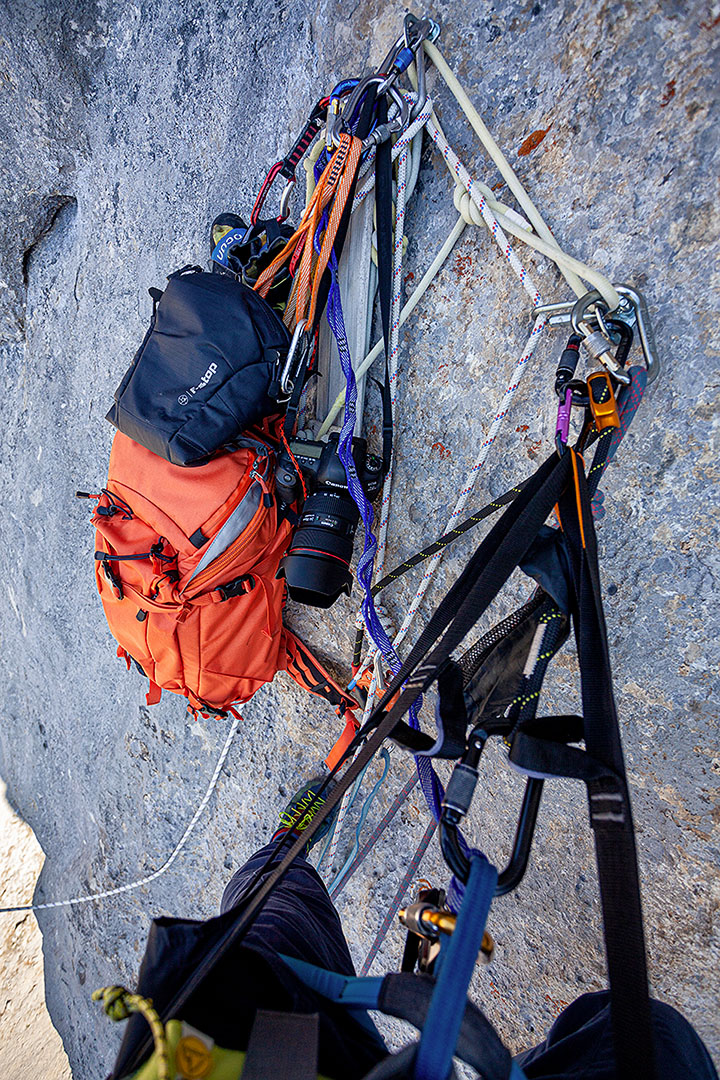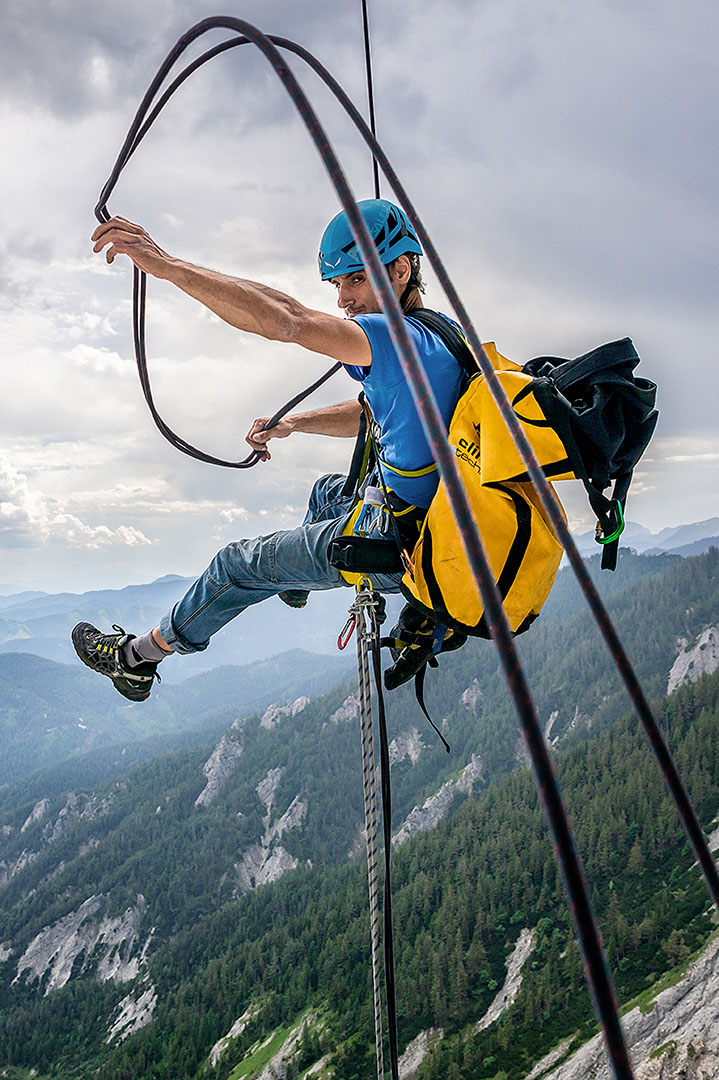

WE ARE F-STOP: with piotrek deska
Piotrek Deska is an outdoor photographer from Poland.
The whole thing started with climbing when he was 15. He also got his first camera somewhere around this age, and it was only a matter of time till those two passions would combine. Now he’s working with companies such as 8a.pl, La Sportiva, and Black Diamond. He has been published in magazines around the world, including Rock & Ice, Klettern, Climbing Magazine, Climax Magazine, National Geographic, Desnivel, and Grimper.
Words and images by Piotrek Deska

A good friend of mine, Lukasz Dudek, is one of the most talented climbers in Poland. He was the first Pole to climb 9a, the first who managed to do an 8C boulder problem, and he has been able to climb on this level for 10 years now. But a couple of years ago his goals got even more ambitious.
Now he’s mostly focused on climbing in the mountains. He has already climbed most of the European classics, including Bellavista, 8c, and the hardest route in Tatra Mountains – Corona, 8c+. After that, he decided to go one step further, and try to climb solo, using a GriGri to belay himself. The first target was a route called Tortour, rated 8c, located on Schartenspitze in the Ybbstal Alps in Austria. On June 14th, 2019 he did it in a first serious push after a few days of searching for the right beta to do every pitch. I felt honored that he asked me to join him in his adventure and be the one to document it.


It’s always hard to compromise the gear you would like to use, and the weight of it when going for a photo shoot in the mountains. You have to remember that there will be a long uphill hike and then you will have to haul everything with you up the ropes. It is important to think about what’s absolutely necessary. As a photographer, my camera equipment is the most important gear. I use a Canon 5D and a selection of lenses. Because I love to shoot using prime lenses, I took a 14mm, 35mm, 85mm, 135mm, and one 24-70 zoom.
But photo gear is not everything you need in the mountains. You also need a harness, leashes, carabiners, ascenders, belay device, rope, helmet, and more. On top of that there are also some essentials, such as an extra jacket, water, more water, and something to eat. And suddenly there’s around 25-30kg of gear you have to take with you. Luckily, the f-stop Ajna paired with the Harney and Navin pouches makes a great combo. I was able to take all that I needed, and it made shooting a much more pleasant experience.

The two most important things in this kind of photo shoot are safety and good frames. Being in a rush is highly inadvisable, especially at the belay stances. There is a lot of climbing gear clipped into the anchors, and it’s easy to get lost in all of it. A bit of inattention and something may fall down. That’s why it’s better to back up the backpack with some extra anchor points.
The other thing is the difficulty of framing. When you’re hanging on a rope it’s quite hard to find the right position to frame, and sometimes it requires a lot of gymnastic moves. But the satisfaction of the results is mostly very rewarding, and you can quickly forget about the struggle.
But the biggest challenge on the wall is time. Getting ready to shoot requires a lot of logistics. You have to prepare the ropes, get in the right position above the climber, make sure everything is secured enough, and then, finally, you can take out the camera. Another thing is the light and weather. On Tortour, the crux pitch is in the middle of the wall and the sun starts to lighten it with very harsh light around 11 a.m. That means that you have to get there very quickly, when it’s still in the shade. Those conditions are much better both for shooting and climbing. Believe me, it’s hard, exacting work, especially with the extra weight and after an approach of a few kilometers.
Luckily, both of us are experienced climbers, so we were moving around in this terrain pretty efficiently. Also, it wasn’t the first time when we were working together, so we know our capabilities very well. It’s important to know what you can expect in the mountains, and what is possible to achieve together. Working with athletes like Lukasz is really great and you can be calm about the results. Besides that, being so high on the wall is also a great adventure itself. The exposure can be intimidating and hours of hanging in the climbing harness can be felt in your legs due to the weaker blood circulation. But most of all it’s a mental game. Hanging with your camera hundreds of meters above the ground on a rope that is as thick as your pinky finger might be too much for most people. But for me it’s something I really love doing! Well, maybe with the exception of changing lenses at those heights. My heart always skips a beat during that process.


To be honest, when we woke up at 4 a.m. to get ready, our psyche wasn’t so great. There was a thick fog everywhere in the valley, and we were pretty sure there was no chance to climb that day. But we decided to start hiking anyway. In the end, we were in the mountains and everything is possible when it comes to weather. It was the biggest relief when we got near the base of the wall. We found ourselves out of the fog and saw this beautiful cloud carpet below.


During jumaring (ascending on the rope) a backpack is not the best solution. The weight of it disrupts the center of the weight and pulls back. So, the best solution is to hang the bag below you. And when it comes to shooting, it’s best, when it’s possible, to stabilize your position with some extra anchor points. It’s easy to get lost in all of those slings and ropes, but it’s definitely the most convenient way to frame what you want.

I shoot mostly rock climbers on a daily basis. But I really love the idea of going back to the mountains. Luckily, Lukasz has the next ambitious goal in his mind, so maybe I will join him again pretty soon.
You can also check out more of my pictures on my website: http://piotrekdeska.com or follow me on Instagram @piotrek_deska
EXPLORE THE GEAR USED IN THIS STORY:
WHAT'S YOUR STORY?
"We Are f-stop" is for all f-stop users to share their stories from the field, from small daily adventures to epic travels. Contact us with your story on Facebook or drop us an email to [email protected] and let us know where your photography takes you and your f-stop pack!





